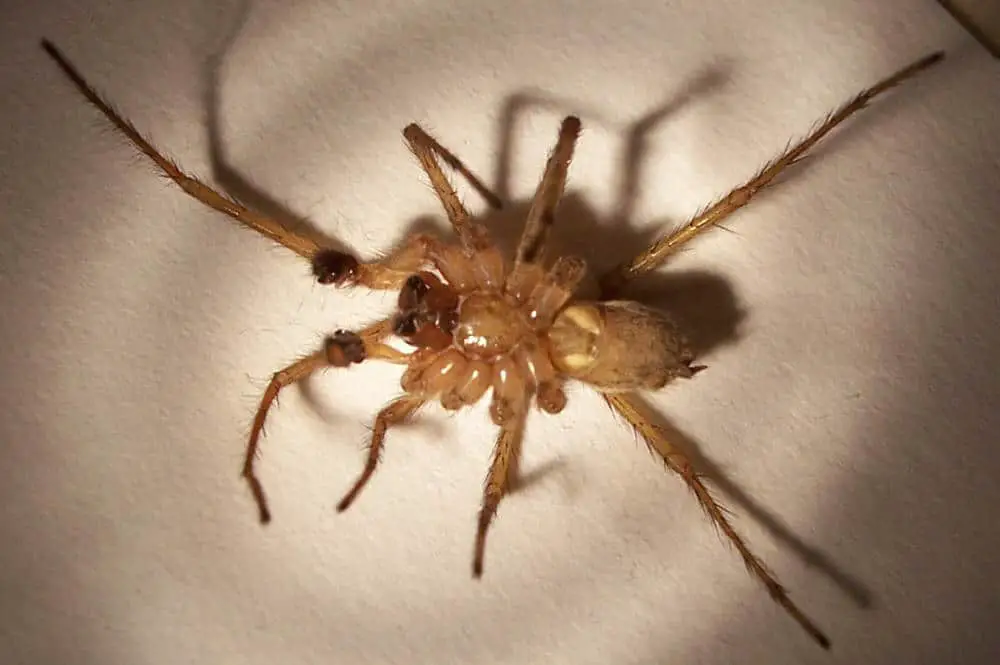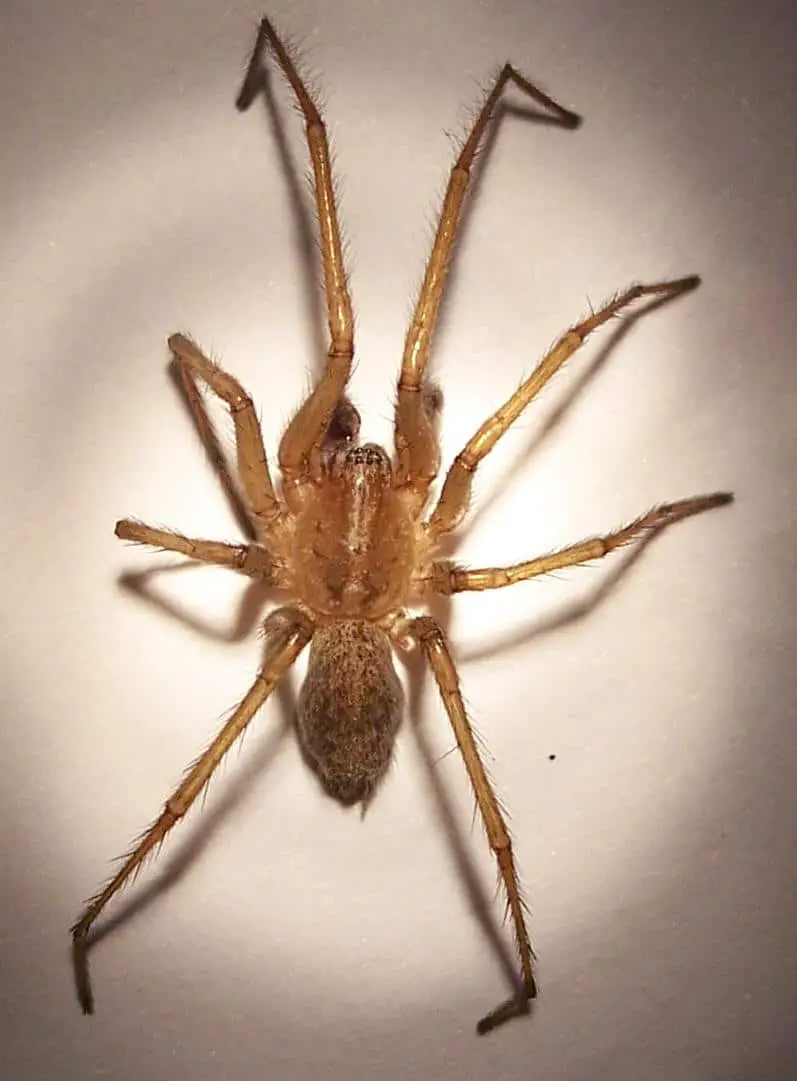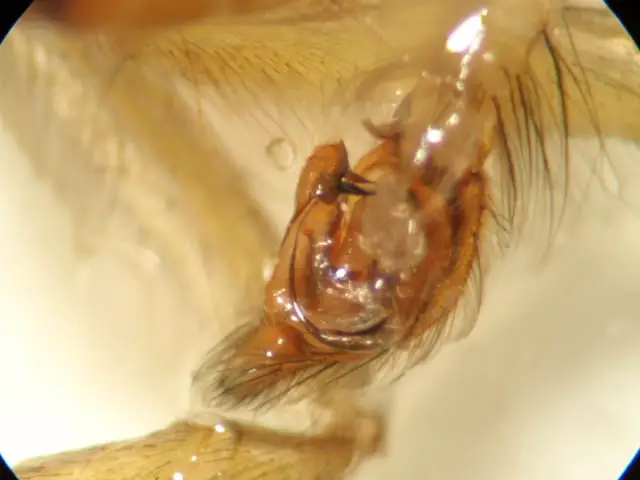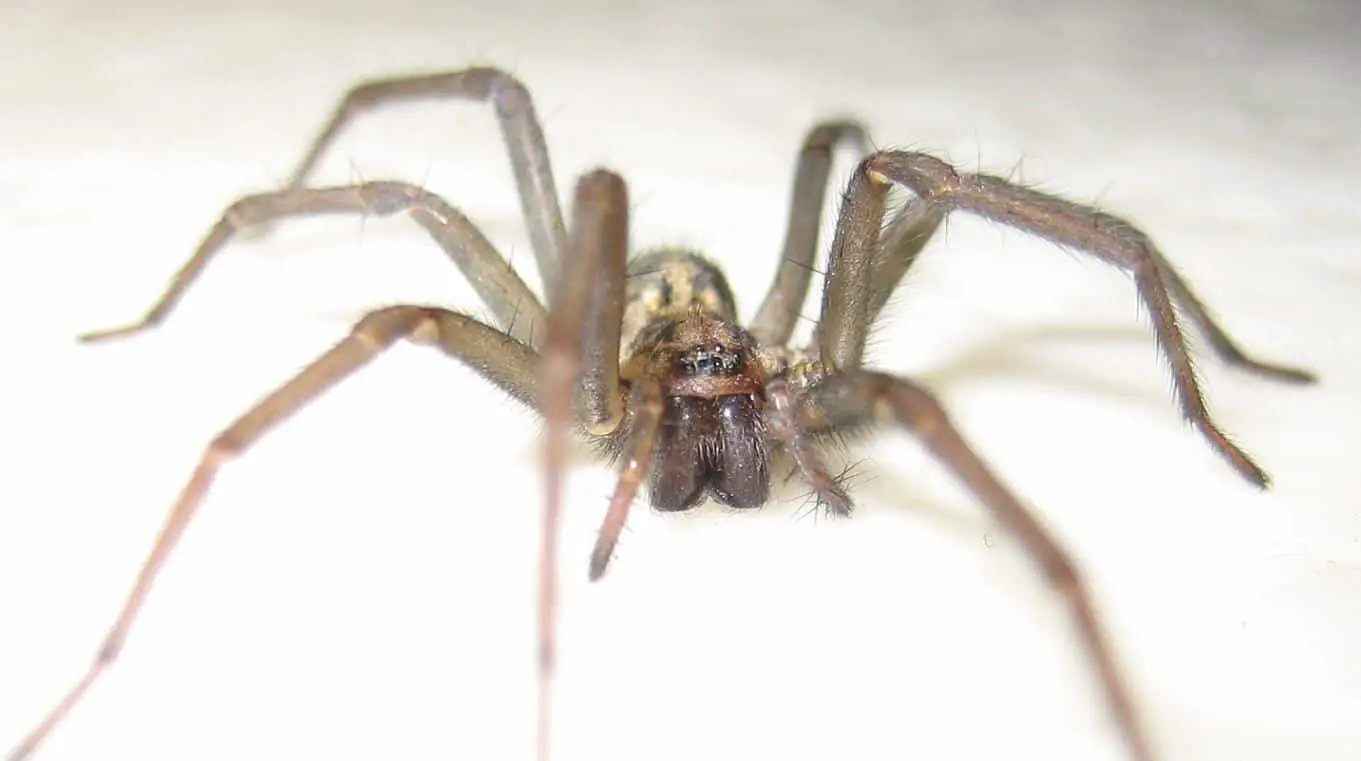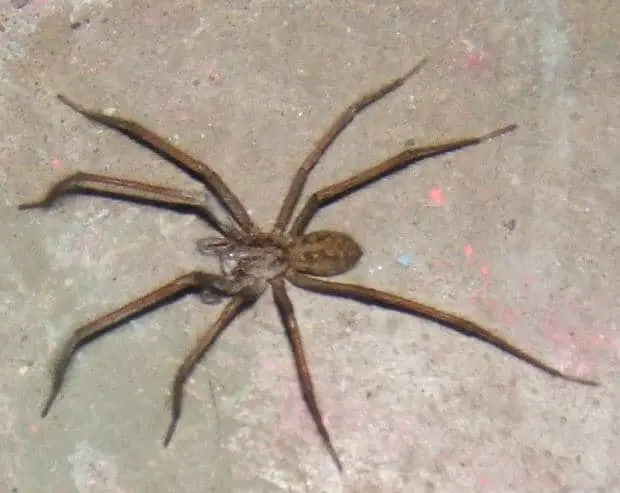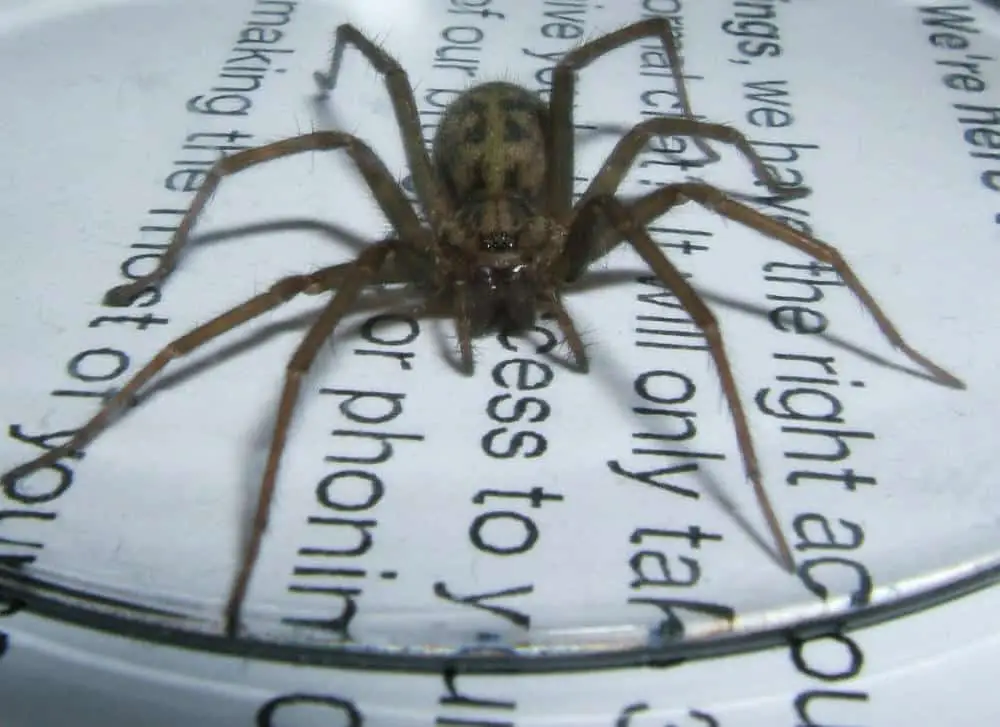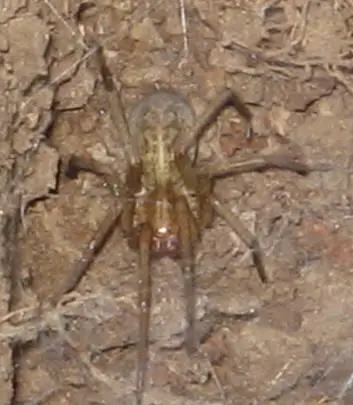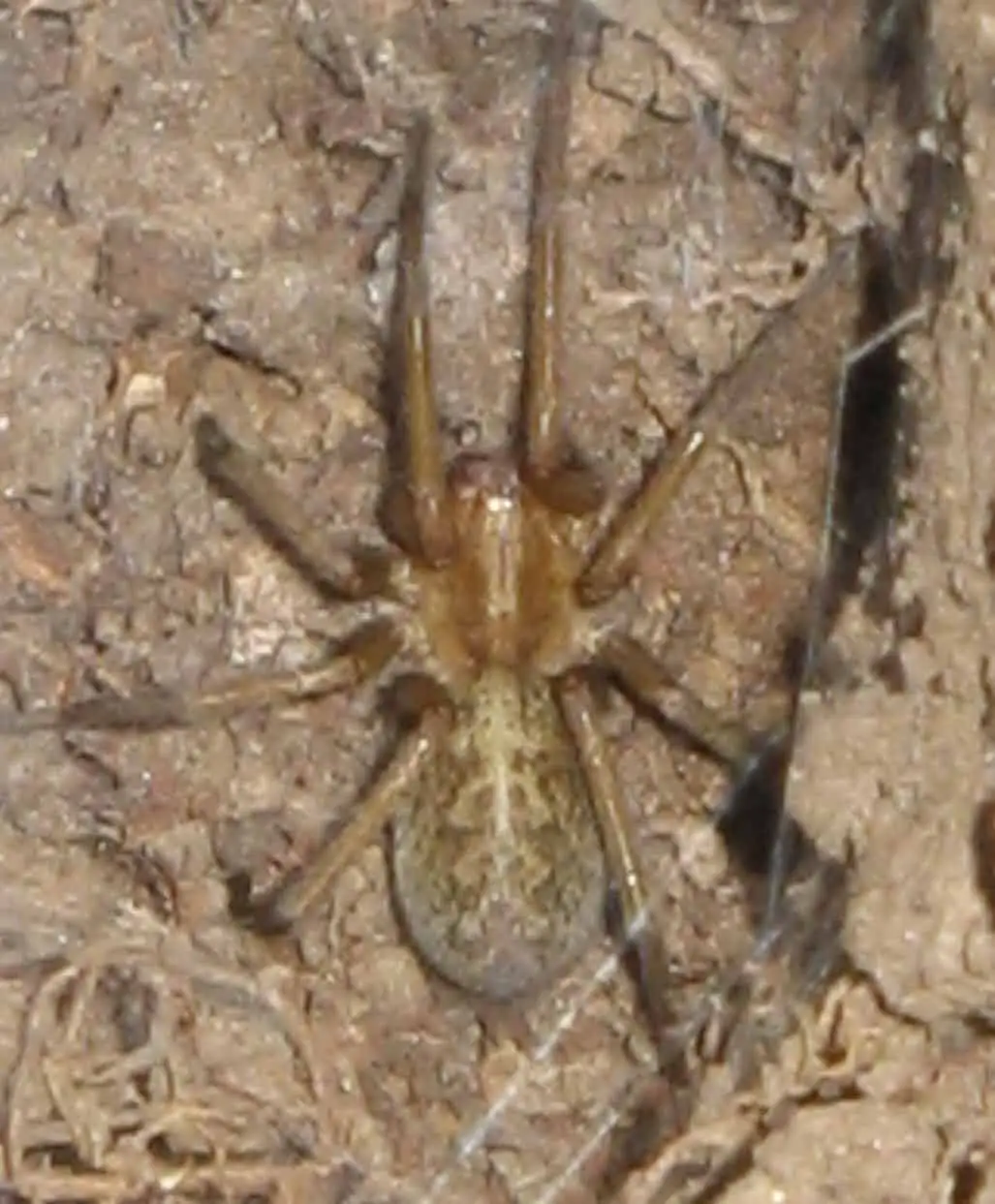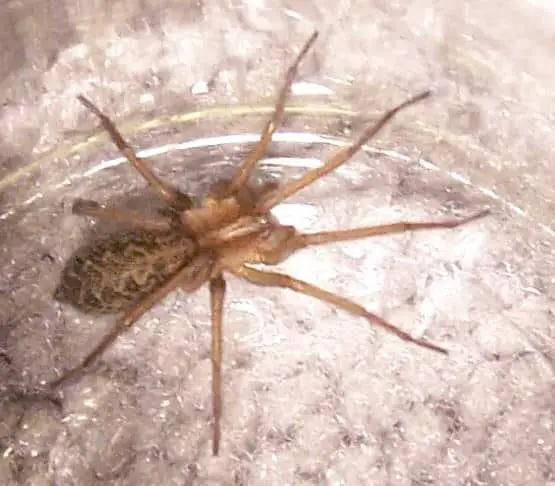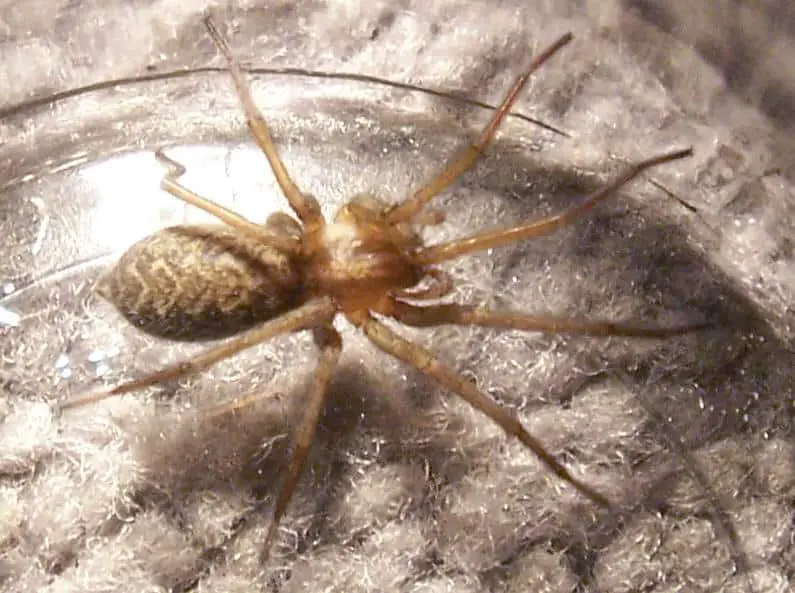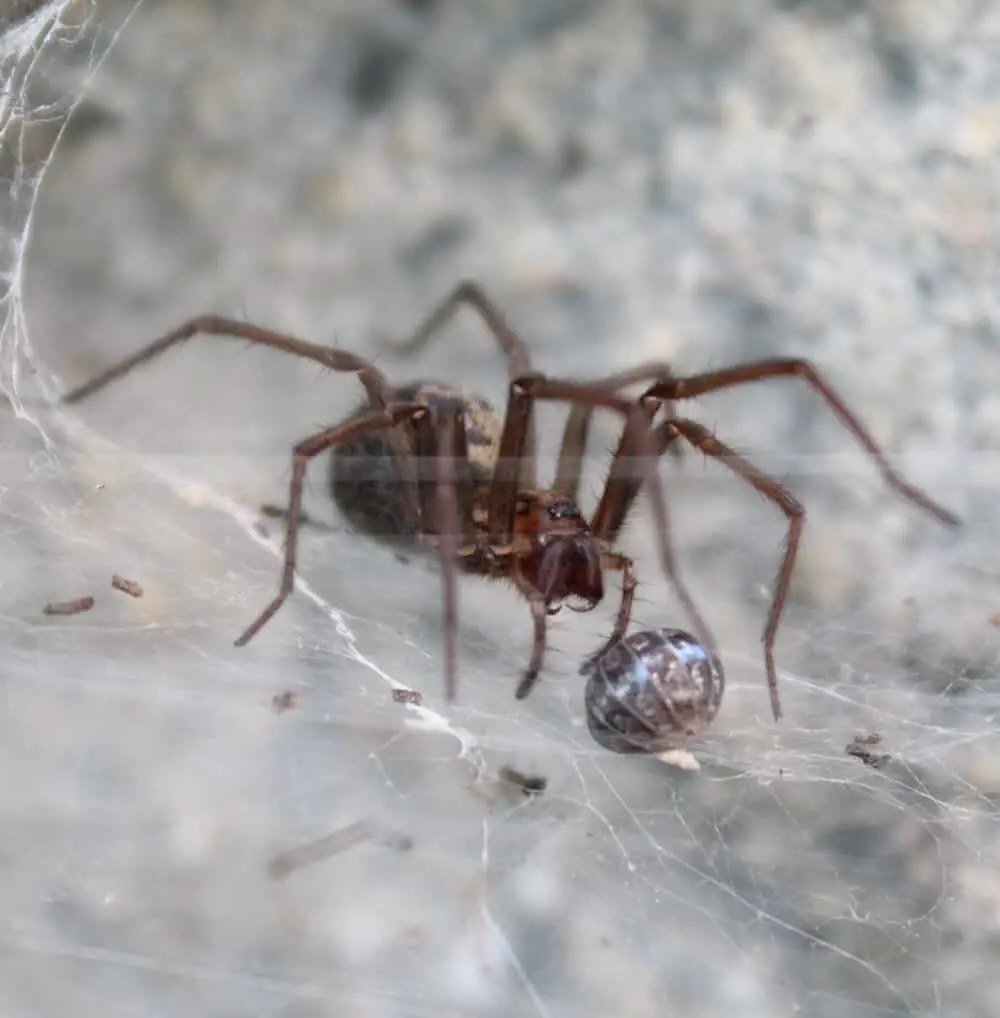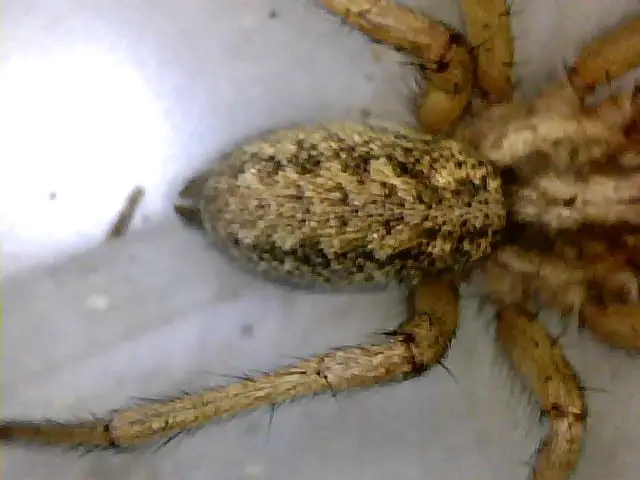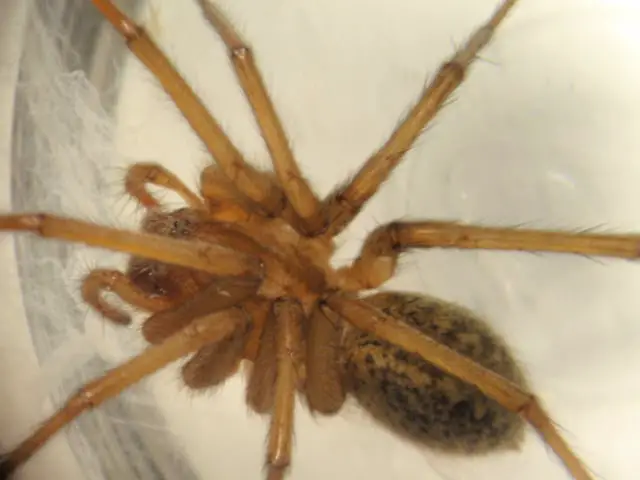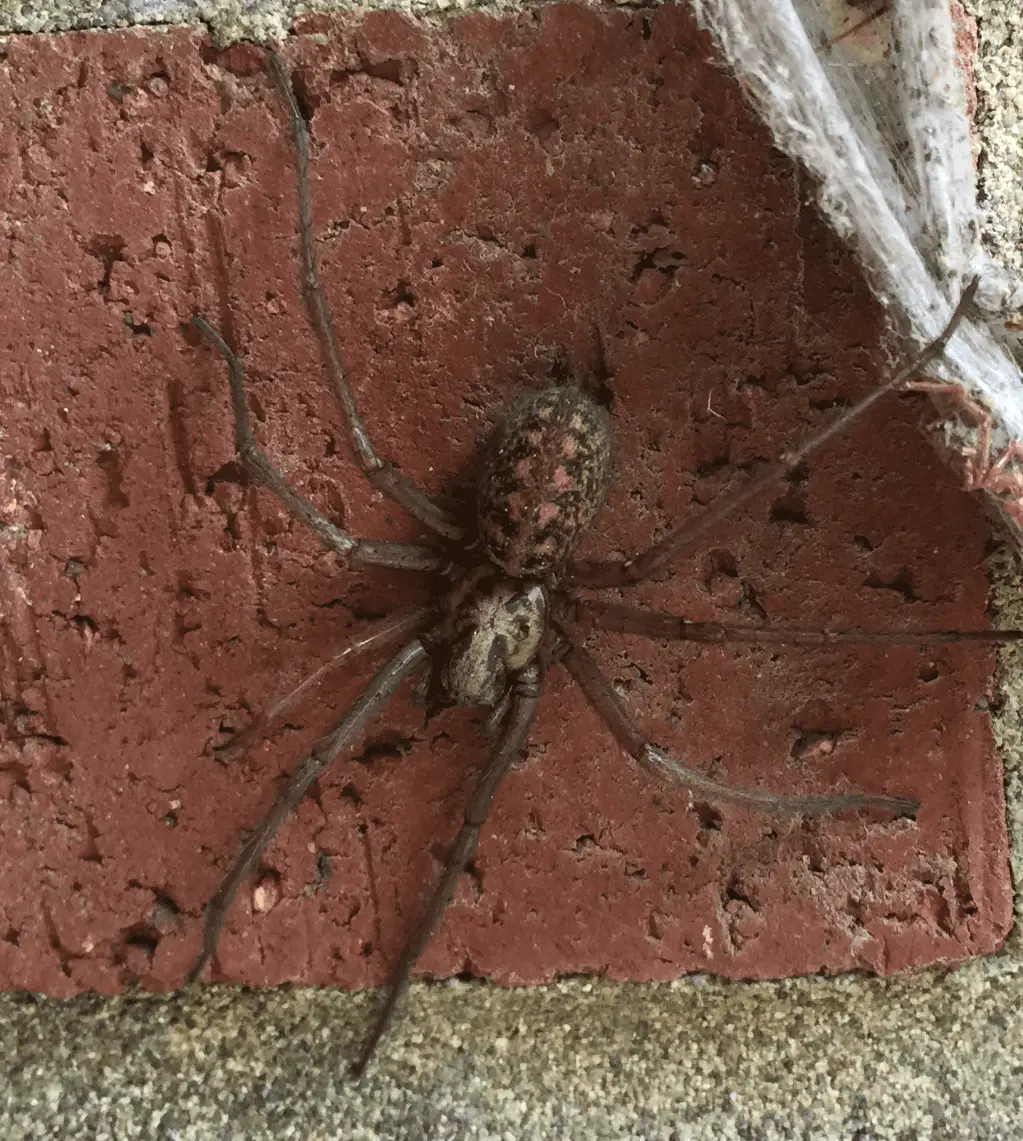Disclaimer: Eratigena and Tegenaria are very hard to tell apart, and I am not at all certain that all the IDs on the tegenaria and eratigena pages are correct. I have done the best I can to try and classify them correctly but would be happy for anyone to tell me if they believe otherwise.
Eratigena belongs to the Funnel Weavers (Agelenidae) species which includes the genuses Agelenopsis and Hololena. Here are some photos of one the Eratigena species – the hobo spider, Eratigena Agrestis. Spiders, including the hobo spider, vary considerably in appearance, and identification can be difficult. Identification relies on an examination of the spider’s anatomy. Positive identification may require microscopic examination of the epigynum and palps.
All photos are copyright to their owners and may not be reproduced without permission.
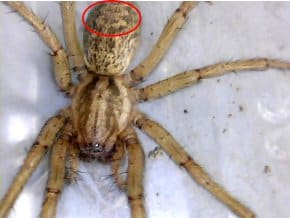
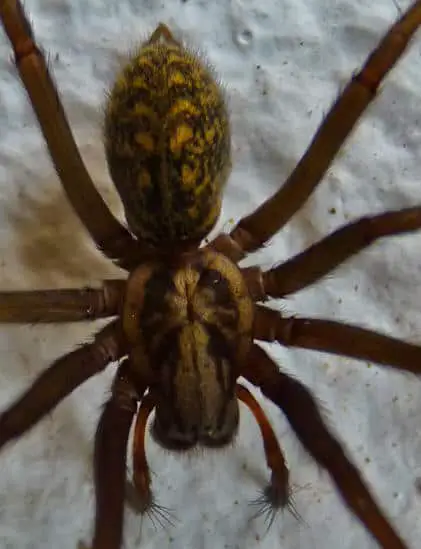
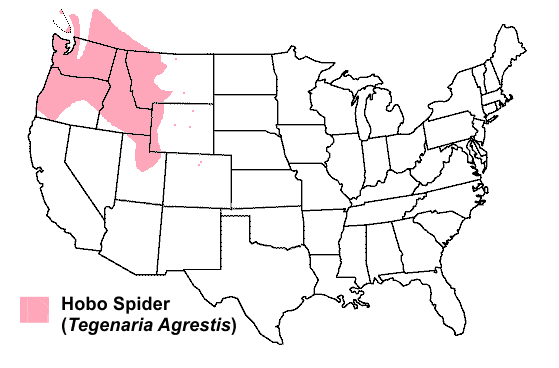
Map above shows the states in USA where Hobo spiders (Eratigena agrestis, formerly Tegenaria agrestis) are found. If you don’t live in one of these states then the chances are that the spider you found is either a Giant House Spider (Eratigena Duellica, or Atrica) or a Barn Funnel Weaver (Eratigena Domestica).
The following characteristics can help in identification of hobo spiders in order to prevent mis-identification and eradication of beneficial species with a similar general appearance:
- Hobo spiders lack the coloured bands found on many spiders of the Agelenidae family where the leg joints meet.
- The abdomen has chevron (V-shaped) patterns (possibly many of them) down the middle, with the chevrons pointing towards the head.
- Like other funnel spiders, hobo spiders have two spinnerets extending from the bottom of the abdomen.
- Hobo spiders have a light stripe running down the middle of the sternum. If the spider instead has three or four pairs of light spots on the lateral portions of the sternum, then it is one of the other related Tegenaria species. However absence of spots is not conclusive proof that the spider is a hobo spider, since the spots on other Tegenaria species may be extremely faint and not readily visible.
- Hobo spiders do not have two distinct longitudinal dark stripes on the top side of the cephalothorax, instead showing indistinct or diffused patterns. Washington spiders with distinct dark stripes include spiders from the genuses Agelenopsis and Hololena and possibly some wolf spiders. (These spiders do not have common names.)
- Check out this page for a great guide.

